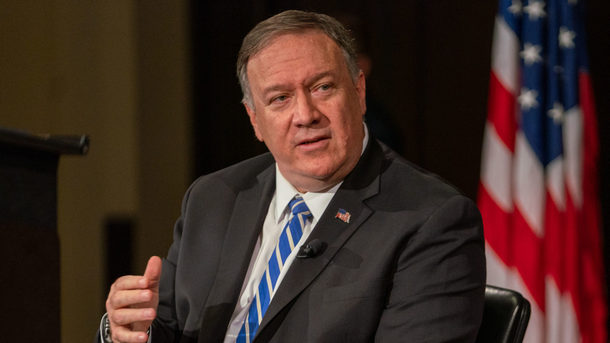Washington, D.C. — To mark the 25th anniversary of the Panchen Lama’s disappearance, U.S. Secretary of State Mike Pompeo on Monday demanded the Chinese government to immediately make public whereabouts of the 11th Panchen Lama chosen by His Holiness the Dalai Lama, 25 years after the six-year-old was seized.
"The Department of State has made the promotion and protection of religious freedom a priority, especially in China, where people of all faiths face severe repression and discrimination," Secretary of State Pompeo said in a statement issued on May 18, 2020.
"As part of that mission, on May 17, we marked the 25th anniversary of the disappearance of the 11th Panchen Lama, Gedhun Choekyi Nyima, who has not appeared in public since the PRC government abducted him in 1995, at age six," he further said.
The Secretary of State stated that "the Panchen Lama is one of the most important figures in Tibetan Buddhism with spiritual authority second only to the Dalai Lama. But China’s persecution of the Panchen Lama is not unusual."
Pompeo further stated: "The United States remains deeply concerned about the PRC’s ongoing campaign to eliminate the religious, linguistic, and cultural identity of Tibetans, including through the ongoing destruction of communities of worship and learning, such as the Larung Gar and Yachen Gar Buddhist Institutes."
"Tibetan Buddhists, like members of all faith communities, must be able to select, educate, and venerate their religious leaders according to their traditions and without government interference.," he added.
Secretary Pompeo concluded, "We call on the PRC government to immediately make public the Panchen Lama’s whereabouts and to uphold its own constitution and international commitments to promote religious freedom for all persons."
Over the past 70 decades, there has been ongoing political repression, social discrimination, economic marginalization, environmental destruction, and cultural assimilation, particularly due to Chinese migration to Tibet which is fueling intense resentment among the people of occupied Tibet.
The communist-totalitarian state of China began its invasion of Tibet in 1949, reaching complete occupation of the country in 1959. Since that time, more than 1.2 million people, 20% of the nation's population of six million, have died as a direct result of China's invasion and occupation. In addition, over 99% of Tibet's six thousand religious monasteries, temples, and shrines, have been looted or decimated resulting in the destruction of hundreds of thousands of sacred Buddhist scriptures.
Until 1949, Tibet was an independent nation in the Himalayas which had little contact with the rest of the world. It existed as a rich cultural storehouse — unifying theme among the Tibetans — as was their own language, literature, art, and world view developed by living at high altitudes, under harsh conditions, in a balance with their environment.


![Tibet has a rich history as a sovereign nation until the 1950s when it was invaded by China. [Photo: File]](/images/stories/Pics-2024/March/Tibet-Nation-1940s.jpg#joomlaImage://local-images/stories/Pics-2024/March/Tibet-Nation-1940s.jpg?width=1489&height=878)
















